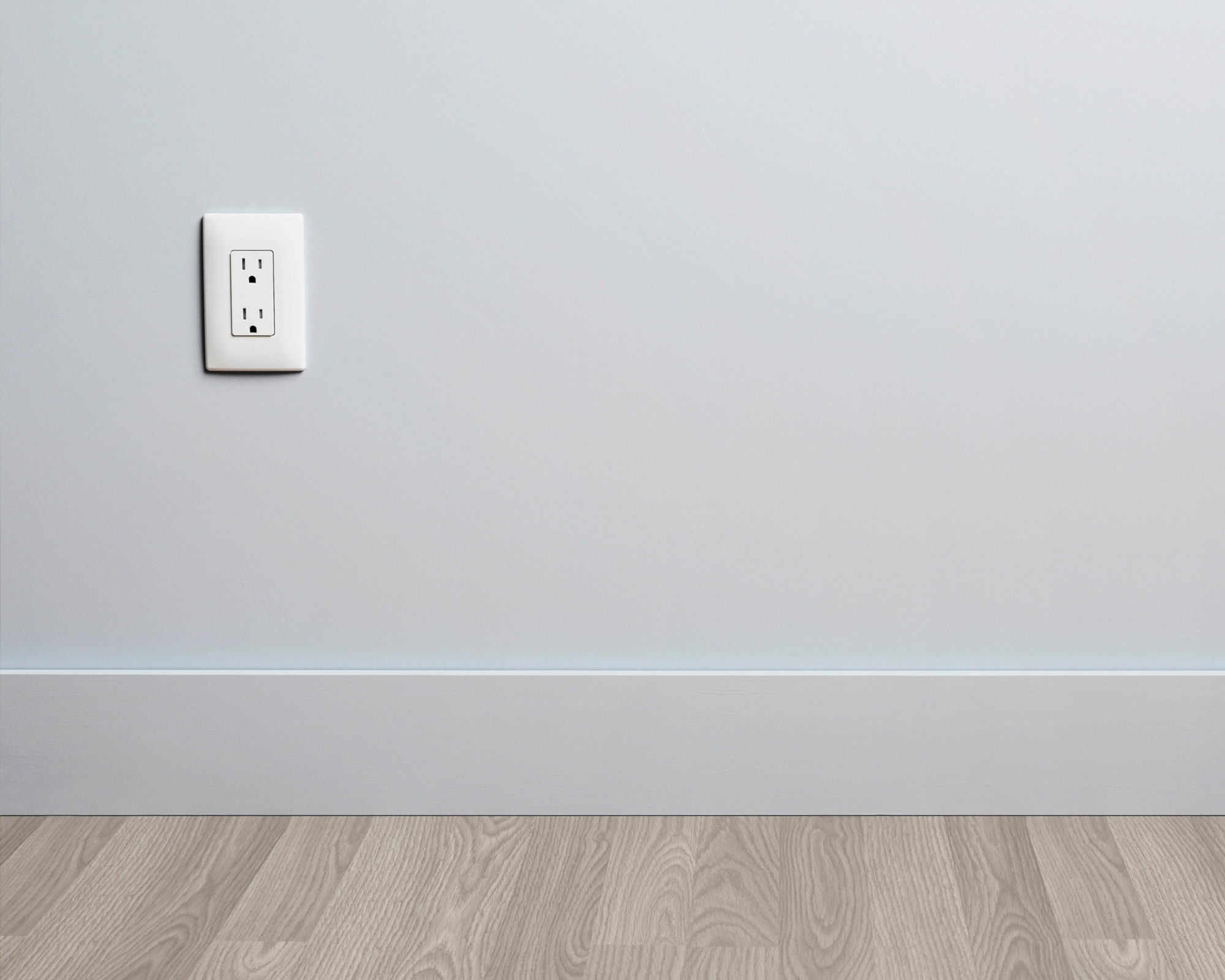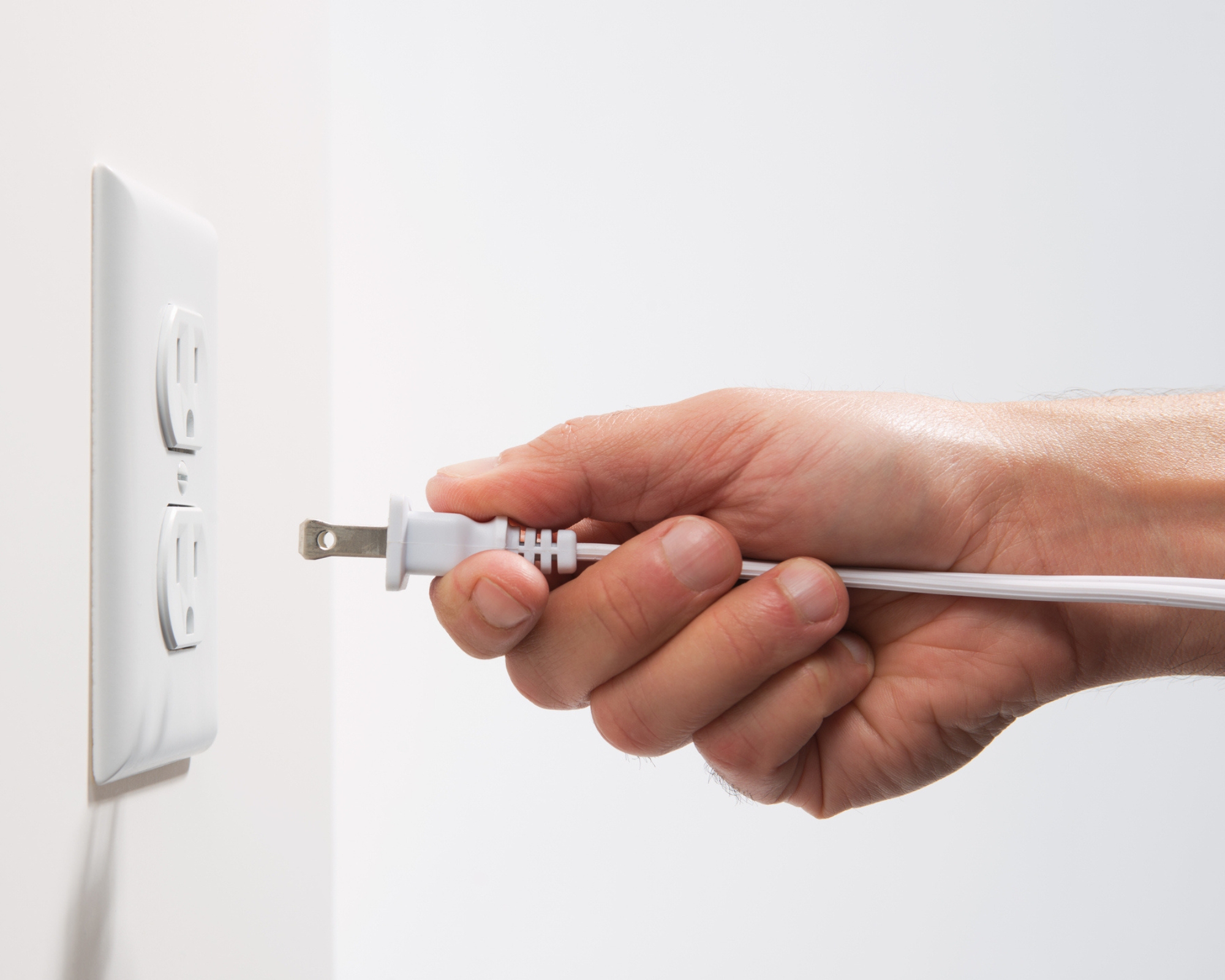
If you have a loose outlet in your home, it's best to fix it quickly. Your household power can be dangerous, and leaving a loose outlet can lead to fires, and even worse electrocution.
But, don’t panic. This can be a quick DIY fix that you can do with the expert advice in this guide, including finding the circuit breaker and carrying out this job safely.
Being able to do this is a vital skill every homeowner should know and will stand you in good stead to tighten up any wobbly outlets and keep your household safe.
Essential safety precautions before fixing loose outlets

A household power supply can be dangerous. Trust me I’ve electrocuted myself in the home and it wasn’t pleasant. So there are a few precautions you need to take to ensure you don’t end up in the emergency room.
Donald Skelly, Master Electrician at Earth Saving Solutions, says, ‘You should always switch the breaker off for that circuit and test to verify it is off.’ He adds, ‘You should never try to change the outlet while power is supplied to the outlet.’
Beyond these must-follow safety tips, Skelly offers a note of caution, ‘Replacing a basic outlet can be relatively simple for someone who has some experience. But, I would not recommend replacing an outlet if you don’t have any experience. It can be dangerous and one of the highest causes for fires in homes is electrical issues.’
Ben Kolo, owner at Mr. Electric, follows this up with another word of warning, ‘Homeowners should avoid working on outlets and electricals around the home as it requires special training and needs to be done by code standards.
Ultimately, you can tackle simple electrical tasks, such as fixing a loose outlet, but generally consider most electrical jobs as a household project not to DIY.
Why is my outlet loose?
There is a simple reason why an outlet is loose. Kolo explains, ‘Frequent use can cause outlets to experience wear and tear and cause the interior components to loosen. Mounting screws can also become loose over time, which can cause the mounting box to shift.’
Skelly suggests another cause, ‘The outlet can have a loose attachment to the mounting box itself.’
If it's neither of these, Kolo adds damage to the receptacle clips over time can make the plug to the electrical items feel loose. 'This is because the metal clips that hold the plug in place can become worn or damaged over time, making the connection feel loose’.
Here are the five steps our pros recommend for safely fixing your loose outlets:
1. Switch off power

The first step is simple. Skelly says, ‘Turn the circuit off and confirm it is off before you start.’
How do you confirm it's off? Try a light switch or plug in a working lamp to see if it turns on or not.
2. Remove cover plate
The cover plate is the cover that is placed over the outlet. Skelly says, ‘Take a smaller flat head screwdriver, loosen the screw (or screws) and remove the cover plate.’ Make sure to place the cover plate screws in a bowl to avoid losing them.
3. Tighten screws
The outlet, which is the bit you plug your appliances, lamps and chargers into, is attached to the mounting box. Skelly says, 'Take a Phillips screwdriver, this is the typical screw type, and tighten the two screws that hold the outlet to the box’.
If needed, use a flat head screwdriver to tighten the screws. Kolo says, ‘Ensure you have the correct tools and avoid contact with live wires. Use an insulated tool like the Wiha Insulated SoftFinish Cushion Grip Screwdriver Set from Amazon, to reduce the risk of electrical shock.’
4. Straighten outlet
The outlet face is typically covered with plastic, but the tabs - top and bottom - that hold it in place are made of metal and may twist when tightening. Skelly says, ‘If the outlet is a little crooked, gently bend the tabs so that the outlet is straight’.
5. Replace and test
The final step is to put the outlet back together and test. Skelly says, ‘Use the flathead screwdriver to tighten the face plate back on.' Once back in place, switch on the power and test the outlet to make sure it's working.
A pro tip from Skelly is to replace the outlet cover with a preferred outlet cover. He says, ‘There are two levels of quality of outlet covers. One is a cheaper and more brittle version. The better version, like the NERLITES Duplex Receptacle Outlet Wall Plate from Amazon, is a preferred. It is made out of a more durable product and will not break as easily.’
He adds, ‘The reason we recommend it is that it's easy to over tighten when installing the outlet or switch covers. With the cheaper version, it will break a lot easier.’
What other ways are there to fix a loose outlet?
Beyond the simple and DIY-friendly fix of tightening various screws you may need to use a box extender to bring a loose outlet level to the wall and up to code compliance.
Kolo quickly runs through the process, ‘Cut the power to the outlet, remove the cover, install the box extender by sliding it into the existing box and bringing it flush with the wall surface. Reattach the outlet by securing the outlet back to the box extender with screws and put the outlet cover back on and restore power.’
Kolo says you will need a screwdriver, a box extender such as the Receptacle Outlet Box Extender from Amazon, and a voltage tester such as the Klein Tools Electrical Tester Bundle from Amazon, to make sure there are no live wires or power going to the outlet.
Another option is having the outlets replaced to modernize. Kolo suggests, ‘This would be a good time to upgrade to modern outlets with USB capabilities.’
Finally, if the outlet mounting box is loose, Skelly recommends calling in a professional, ‘They will need to break the old box out, and replace it with a new box.’ This will involve removing the wiring from the outlet and then replacing. ‘This takes experience and skill to do this correctly and within code.’
FAQs
Why use a box extender on a power outlet
In older homes or areas where they've not been fitted correctly, a power outlet can become sunken, which means it sits further back than the cover plate and maybe even the wall. This can be dangerous and not adhere to code compliance.
Introducing a box extender will ensure that the outlet sits in the right position and doesn’t move. Making it a much safer option than before.
An alternative solution is to use plastic spacers like these Switch and Receptacle Spacer Outlet Spacers from Amazon. These are cheaper and work well if all the rest of the outlet components such as the mounting box are secure.
Will a loose outlet trip a breaker?
A loose outlet by itself can cause trips in a breaker, but loose wires are often the cause, leading to the circuit break to overload and switch off the power.
Another reason could be that you have a faulty outlet that intermittently causes a trip. Whatever the reason, make sure to get your wiring checked out. You might also experience a surge that has to do with regional power issues.
A loose outlet might be a sign that your electrical wiring isn’t up to scratch and needs replacing, which can be costly. Learn how much it costs to rewire a house.







